Timeline of Discovery
Small science, big discoveries. Big science, big discoveries—all to make the nation, and the world, a better place. Stroll through the years to see just some of our staff and collaborators' major milestones during our 75-year history of discovery.
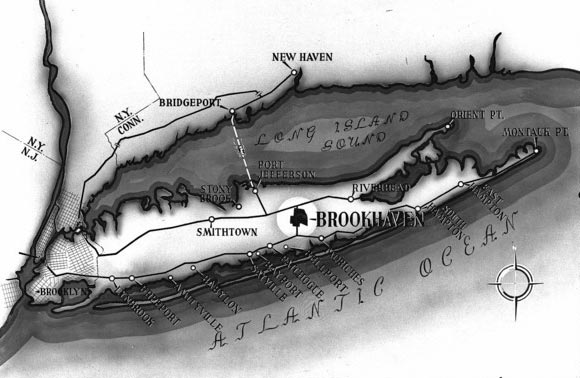
Transfer to the Atomic Energy Commission
The U.S. War Department transfers Camp Upton to the Atomic Energy Commission, the U.S. Department of Energy's predecessor, on March 21 for the founding of Brookhaven National Laboratory.
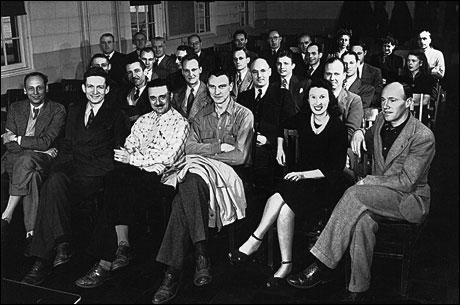
Brookhaven Lab's First Scientific Colloquium
Brookhaven Lab's first scientific colloquium is presented by Norman Ramsey (front, second from left), founder of the Laboratory's former managing company Associated Universities Incorporated and the first chair of the Lab's Physics Department. The colloquium attracts both scientists and administrative staff.
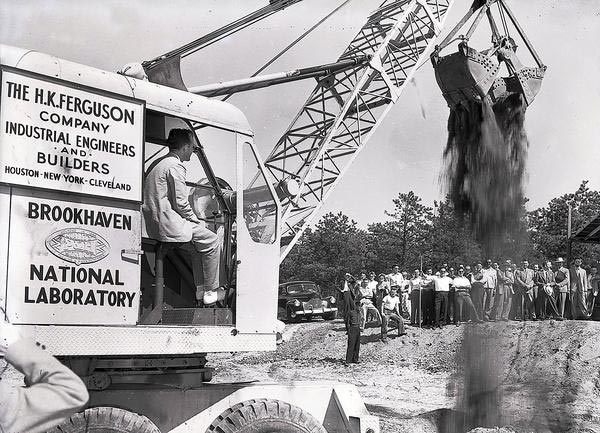
BGRR Construction Begins
Construction begins for the Brookhaven Graphite Research Reactor, the young Laboratory's first major facility and the first reactor built in the United States for peacetime atomic research.
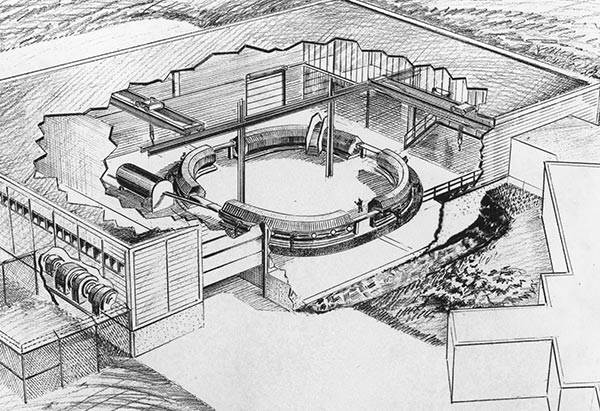
New Lab, New Facility: The Cosmotron
The Atomic Energy Commission approves a plan for a proton synchrotron for research at Brookhaven—the Cosmotron.
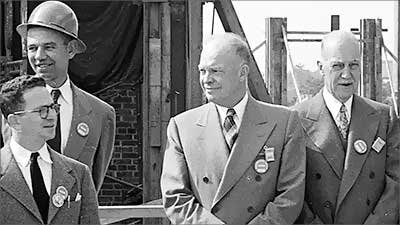
A Pre-presidential Visit
Not-yet President of the United States Dwight D. Eisenhower visits the construction site of the Brookhaven Graphite Research Reactor. At this time, Eisenhower is president of Columbia University.
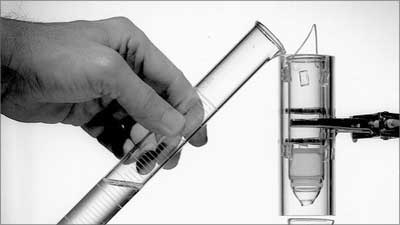
Nuclear Medicine, Still in Use Today
Brookhaven begins a strong nuclear medicine program that leads to common use of two radioisotopes: technetium-99m, the most widely used radioisotope in nuclear medicine, and thallium-201, used in heart stress tests.
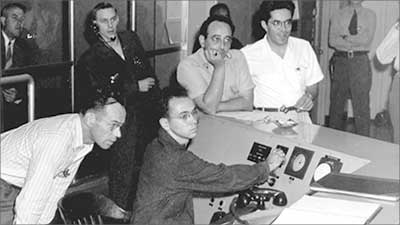
BGRR Begins Operation
Operations begin at the Brookhaven Graphite Research Reactor (BGRR), the first reactor for peaceful research, which produced neutrons for use in scientific experiments. Before the facility is placed on standby 18 years later, scientists conducted research on specimens ranging from seeds to art treasures.
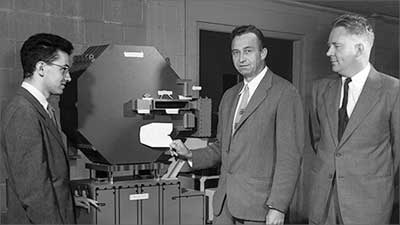
Strong Focusing
Brookhaven physicists—including Ernst Courant and Hartland Snyder—develop the strong-focusing principle. First employed in the Alternating Gradient Synchrotron at Brookhaven and then at many accelerators around the world, strong focusing allows designers to reach high energies more efficiently with smaller equipment.
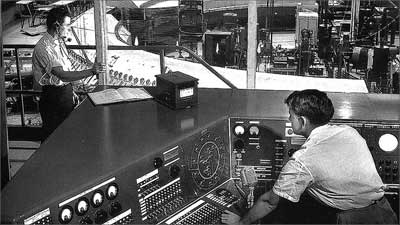
Cosmotron Operations Begin
The Cosmotron is commissioned, reaching its full design energy of 3.3 giga-electron-volts. The Cosmotron becomes the world's highest energy accelerator and the first synchrotron to provide a beam of particles for experiments outside the actual accelerator.
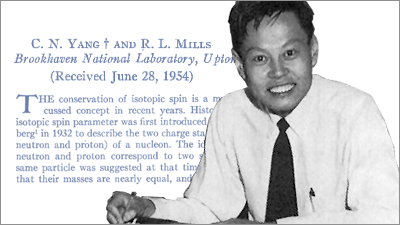
Yang-Mills Theory
C.N. Yang of the Institute for Advanced Study and Brookhaven Lab, and R.L. Mills of Columbia University, write the Yang-Mills theory paper published in the American Physical Society's Physical Review. Yang and Mills' work provides the basis for quantum chromodynamics (QCD)—the theory of "strong" interactions between subatomic quarks and gluons. Three years later, Yang will share the Nobel Prize for Physics, the first Nobel Prize-winning discovery at Brookhaven Lab.
A New Way to Study DNA
Brookhaven researchers discover a new way to study DNA—by attaching the radioisotope tritium to thymidine, one of the building blocks of DNA. Brookhaven biologists later test the Watson and Crick model of the molecular structure of DNA using tritiated thymadine to produce a photographic image of DNA synthesis in plant roots. The results provide the first evidence that Watson and Crick's model of DNA replication operated at the level of individual chromosomes .
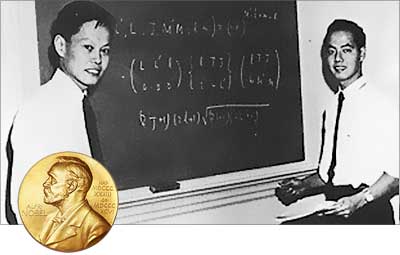
Nobel Prize-winning Discovery: Parity Violation
T. D. Lee (right) of Columbia University and C. N. Yang, then of Brookhaven, interpreted results of particle decay experiments at the Cosmotron particle accelerator at Brookhaven. They discovered particles that had the same masses, lifetimes and scattering behaviors, but decayed differently, proving that the fundamental and supposedly absolute law of parity conservation can be violated. .
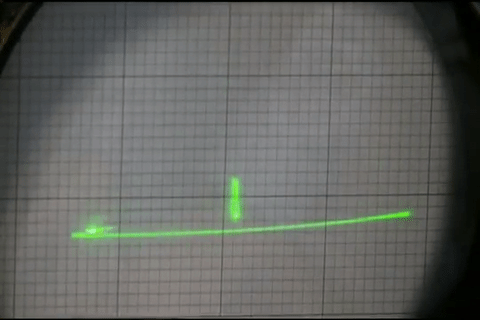
World's First Video Game?
Brookhaven scientist William Higinbotham unveils "Tennis for Two" at a visitors day exhibit. Tennis for Two was a forerunner to today's modern video games, simulating a tennis game and played on an oscilloscope screen—approximately 14 years before the first home video game system and Pong. Fifty-eight years later, in 2016, the U.S. computer and video game industry generated $30.4 billion in revenue (source: Entertainment Software Association and the NPD Group).
Medical Research Reactor Begins Operations
Regular operations begin at the Brookhaven Medical Research Reactor, built to meet scientists' needs for neutrons for medical research.
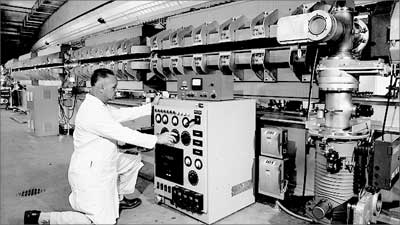
Alternating Gradient Synchrotron
The Alternating Gradient Synchrotron (AGS) reaches its design energy of 33 billion electron volts. It later became the machine on which three of seven Nobel Prize-winning discoveries at Brookhaven Lab were made. Today it remains a critical component of Brookhaven's accelerator complex.
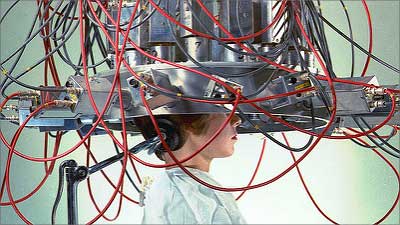
Early PET Scanner
In 1961, chemists at Brookhaven Lab are studying how to detect small brain tumors by analyzing the decay of radioactive material injected into the patient's bloodstream and preferentially absorbed by the tumor. To help them, collaborators in Brookhaven’s Instrumentation Division build a circular detector that becomes a precursor to today's Positron Emission Tomography (PET) scanner.
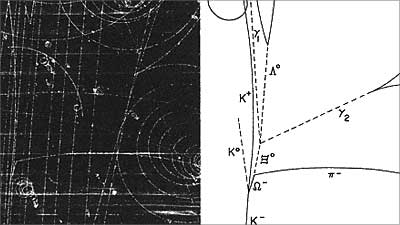
Omega-minus Particle Discovered
Scientists discover the omega-minus particle, previously only theorized to exist, with the 80-inch bubble chamber detector and Alternating Gradient Synchrotron.
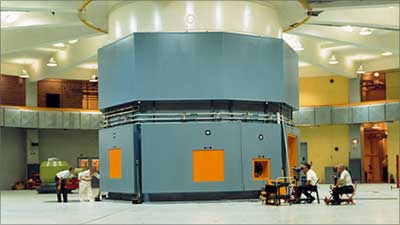
Third Reactor for Research
The High Flux Beam Reactor is commissioned for research to begin. During its 31 years of operation, the reactor achieved an enviable record as a dependable source of neutrons, the sub-atomic probes crucial to a wide array of scientific research programs.
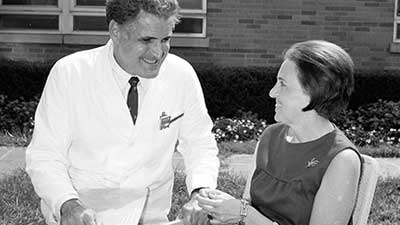
L-dopa for Parkinson's disease
George Cotzias and his group at Brookhaven Lab's [former] Medical Center begin their research on using L-dopa to treat patients woth Parkinson's disease and help them become self-reliant. In 2017, L-dopa is still considered the gold standard for treating Parkinson's. During treatment with L-dopa in 1967, this patient was once again able to knit.
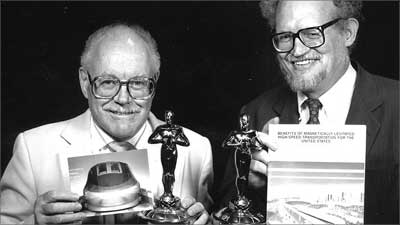
'Maglev' Patented
Brookhaven researchers Gordon Danby and James Powell patent Maglev, the principle of superfast magnetically levitated transportation.
BLIP Radioisotope Producer Begins Operations
The Brookhaven Linac Isotope Producer (BLIP) starts generating radioisotopes for biomedical and industrial applications. With recent upgrades, this facility is still being used to produce important radioisotopes for medical imaging and treating diseases.
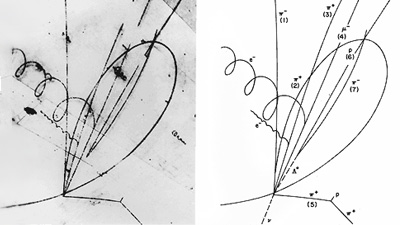
Charmed Baryon Discovered
One year after beginning routine operations with the 7-foot bubble chamber detector at the Alternating Gradient Synchrotron, scientists discover the charmed baryon—a particle composed of three quarks, one of which is the "charmed" quark. This result helps physicists confirm that new member of the quark family.
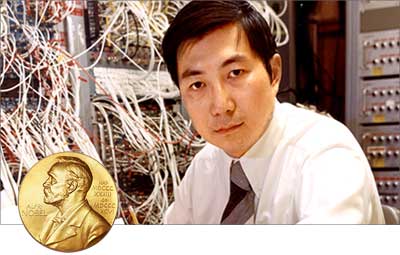
Nobel Prize-winning Discovery: The J/Psi Particle
The 1976 Nobel Prize in physics is shared by Samuel C.C. Ting, a Massachusetts Institute of Technology researcher who used Brookhaven's Alternating Gradient Synchrotron to discover a new particle and confirm the existence of the charmed quark. Ting is credited for finding what he called the "J" particle, the same particle as the "psi" found at nearly the same time by Burton Richter.
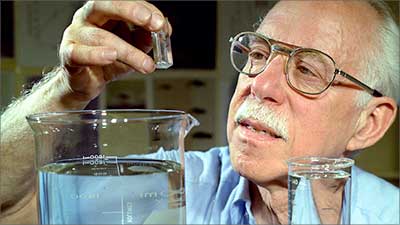
Ultraviolet Light and Cancer
Brookhaven biologist Richard Setlow's experiments show exposure to two forms of ultraviolet (UV) light—both A and B—could lead to malignant melanoma. Previously, only exposure to UV-B was believed to induce such cancers.
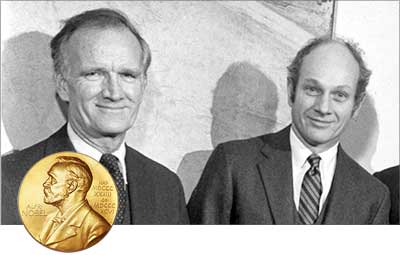
Nobel Prize-winning Discovery: CP Violation
The 1980 Nobel Prize for Physics is awarded to James W. Cronin and Val L. Fitch, both then of Princeton University. Their 1963 experiment at Brookhaven's Alternating Gradient Synchrotron showed a flaw in physics' central belief that the universe is symmetrical as they discovered the phenomenon known as "CP violation."
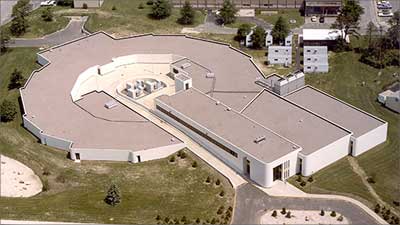
NSLS Dedicated
After four years of construction, the National Synchrotron Light Source (NSLS) is dedicated as operations begin with ultra-bright light from the vacuum ultra-violet ring. During more than 30 years of operations, NSLS becomes one of the world's most widely used scientific facilities with more than 19,000 users conducting experiments using its beams of x-ray, ultraviolet, and infrared light, leading to many advances, two Nobel Prize-winning discoveries, and nine R&D 100 Awards.
Sequencing DNA
Scientists at Brookhaven finish determining the DNA sequence of the virus T7, the longest DNA sequence then known. In all, 39,936 base pairs are counted and identified. The genetic map was correlated with T7's protein production, which led to a detailed understanding of how such viruses control their own replication.
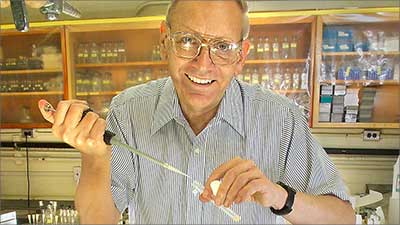
Applications Filed for Biotechnology Later Used for COVID-19 Vaccines
Brookhaven Lab's Bill Studier and his colleagues develop the T7 expression system. More than 35 years later, Pfizer-BioNTech and Moderna use this system to ramp up production of their COVID-19 vaccines. The T7 expression system directs E. coli cells to produce useful amounts of almost any protein. Scientists around the world use it to obtain individual proteins for analyzing how they work. More than 1,000 companies have licensed the system to produce proteins for commercial purposes, including medical diagnostics and treatments.
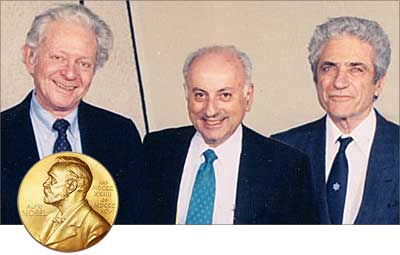
Nobel Prize-winning Discovery: The Muon-Neutrino
Leon Lederman, Melvin Schwartz, and Jack Steinberger receive the 1988 Physics prize for their 1962 discovery of the muon-neutrino. At the time, only the electron-neutrino was known. Using Brookhaven's Alternating Gradient Synchrotron, they detect a new type of the ghostlike particles that pass through everything.
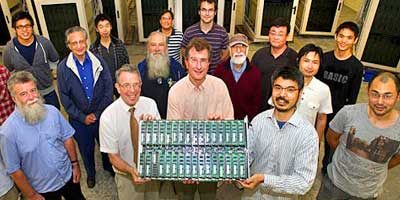
World's Fastest Multipurpose, Non-commercial Supercomputer
The world's fastest non-commercial supercomputer makes its debut at the Japanese RIKEN BNL Research Center at Brookhaven Lab. The supercomputer is optimized for research on quantum chromodynamics—the theory of "strong" interactions between subatomic quarks and gluons.
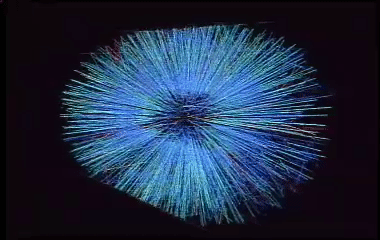
First Collisions at RHIC
The Relativistic Heavy Ion Collider (RHIC) begins operations with particles colliding and detectors detecting. This fantastically productive machine—with thousands of staff, users, and students contributing to its success—provides data to probe interactions between subatomic quarks and gluons as well as to explore how the proton's constituent particles contribute to its "spin property." This helps scientists better understand the matter that makes up the mass of 98 percent of everything we see in the universe today—from individual atoms to people, plants, planets, and stars. This image is the end view of a gold ion collision in the STAR detector. .
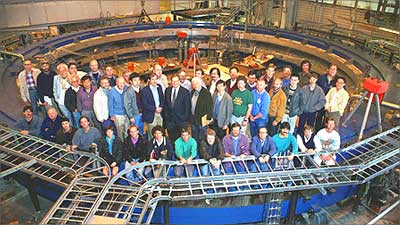
Violation of the Standard Model in Muon Decays
Physicists announce a possible violation of the Standard Model of Particle Physics that describes the universe's most basic building blocks and explains how they interact. Their announcement is based on data collected from more than one billion muon decay events in the muon g-2 experiment at Brookhaven.
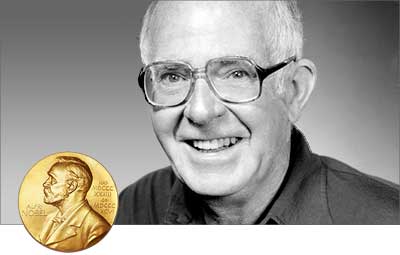
Nobel Prize-winning Discovery: Cosmic Neutrinos
Raymond Davis Jr., a chemist at Brookhaven Lab, wins the 2002 Nobel Prize in Physics for detecting solar neutrinos—ghostlike particles produced in the nuclear reactions that power the sun. Davis shares the prize with Masatoshi Koshiba of Japan and Riccardo Giacconi of the United States.
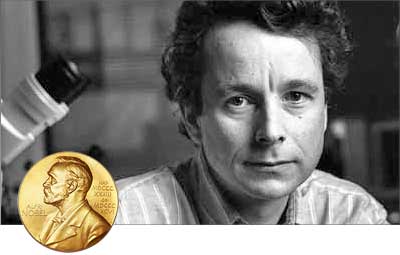
Nobel Prize-winning Discovery: Chemistry of the Cell
Roderick MacKinnon, M.D., a visiting researcher at Brookhaven Lab, shares the 2003 Nobel Prize in Chemistry for work explaining how a class of proteins helps to generate nerve impulses—the electrical activity that underlies all movement, sensation, and perhaps even thought.
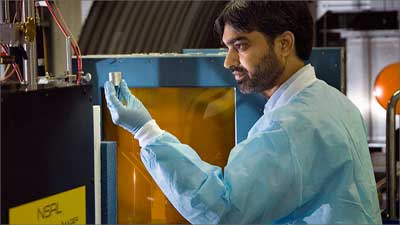
Helping Prepare for Space Missions to the Moon and Mars
The National Aeronautics & Space Administration (NASA) Space Radiation Laboratory is commissioned at Brookhaven Lab. At this facility, which relies on particle beams and infrastructure from the Relativistic Heavy Ion Collider, scientists study how simulated space radiation affects biological and physical systems in preparation for future missions to the Moon and Mars.
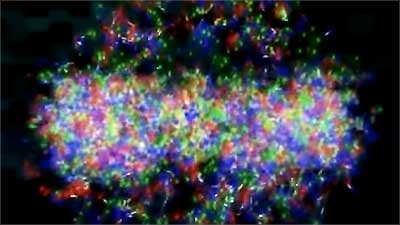
The 'Perfect' Liquid
Scientists discover quark-gluon plasma, a "perfect" liquid 100,000 times hotter than the center of the sun and so hot that protons and neutrons melt into a freely flowing sea of subatomic quarks and gluons. Scientists observe the quark-gluon plasma from particle collisions at the Relativistic Heavy Ion Collider and its PHENIX and STAR detectors, and they are surprised that the substance is a liquid, not a gas, as new questions and "adventures" emerge.
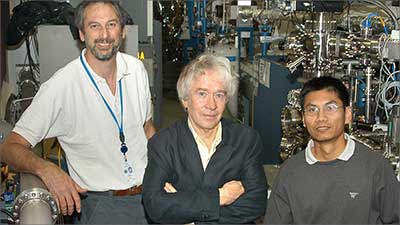
Setting the Stage to Find Drugs Against SARS
Scientists at Brookhaven Lab set the stage for the rapid identification of compounds to fight against severe acquired respiratory syndrome (SARS), an atypical pneumonia that has been responsible for deaths worldwide. Researchers at the National Synchrotron Light Source characterize a component of the virus to be the target for new anti-SARS virus drugs.
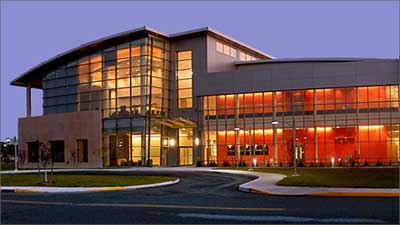
Nanotechnology Center Opens
The Center for Functional Nanomaterials (CFN) opens at Brookhaven, featuring state-of-the-art equipment to probe and design materials at the nanoscale—the tiny world within our own, where materials are so small they are measured in billionths of a meter. Construction began in 2005. Today, scientists at the CFN have completed a range of investigations for research on efficient catalysts, fuel cell chemistries and architectures, photovoltaic (solar cell) components, and more.
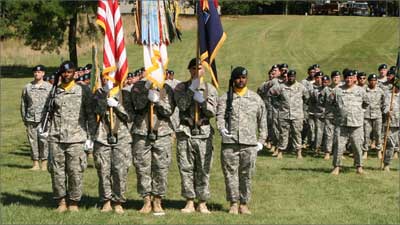
U.S. Army Retires the 77th
At a "casing of the colors" ceremony, the U.S. Army marks the retirement of the 77th U.S. Army Regional Readiness Command—the infantry division that began its distinguished 91-year history at the site of Brookhaven Lab, when the U.S. Army operated the site as Camp Upton.
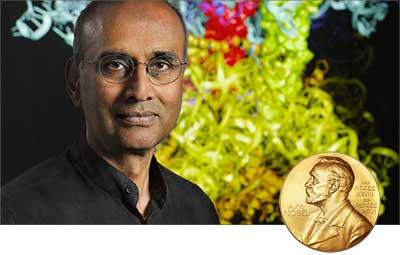
Nobel Prize-winning Discovery: Atomic-Level 'Pictures' of Protein
Venkatraman Ramakrishnan (pictured) of the Medical Research Council Laboratory of Molecular Biology in Cambridge, United Kingdom—a former employee in Brookhaven's Biology Department, and a long-time user of Brookhaven's National Synchrotron Light Source (NSLS)—and Thomas A. Steitz of Yale University, also a long-time NSLS user, shared the Nobel Prize with Ada Yonath of the Weizmann Institute of Science for studying the structure and function of the ribosome.
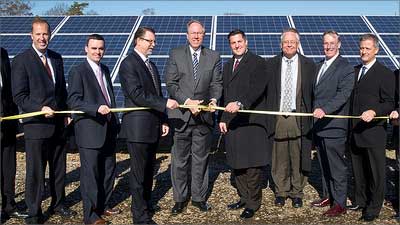
Long Island Solar Farm at Brookhaven Lab Opens
The Long Island Solar Farm at Brookhaven Lab, the largest solar project in New York State to date, opens to produce 32 megawatts of power, enough energy for up to 4,500 Long Island homes. Researchers at Brookhaven begin collecting large amounts of data that stream in from sensors and imagers installed across the solar array to develop advanced forecasting models and techniques.
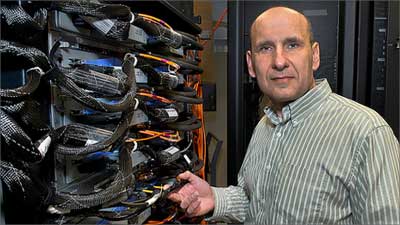
The Super Supercomputer, BlueGene/Q
The Blue Gene/Q system at Brookhaven ranks fifth on the Graph 500 list of data-intensive supercomputers at the time, placing it among the world's best.
The Higgs Boson
Brookhaven scientists join in announcing discovery of a new particle, later identified to be the long-sought-after Higgs boson at the Large Hadron Collider at CERN in Europe. Brookhaven Lab holds multiple roles for the ATLAS detector, one of two detectors used to observe the particle, as the U.S. host laboratory for the ATLAS collaboration.
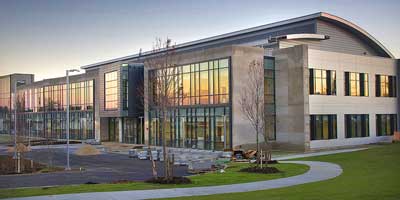
Interdisciplinary Collaborations for Energy Research
Doors open at the Interdisciplinary Science Building for scientists to drive breakthroughs in energy research at Brookhaven Lab. This hub provides customized laboratories for multidisciplinary research teams to tackle challenges as they engineer and optimize materials with the goal of developing breakthrough technologies for batteries, biofuels, and solar panels.
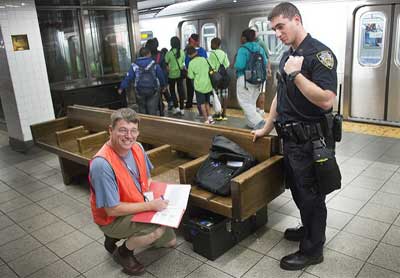
Teaming with New York City Police Department for Study to Optimize Emergency Response
Brookhaven Lab scientists and New York City Police Department (NYPD) staff conduct the largest-ever urban airflow study. With funding from the Department of Homeland Security and support from several other national labs, their investigation is designed to better understand the risks posed by airborne contaminants—including chemical, biological, and radiological weapons—for the NYPD to optimize emergency response if those contaminants are dispersed in the atmosphere or the city's subway system, accidentally or intentionally.
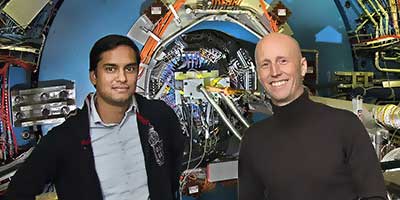
A New Era of Discovery at RHIC
A new era of discovery at the Relativistic Heavy Ion Collider (RHIC) is underway with accelerator advances and detector upgrades to probe interactions between subatomic quarks and gluons as well as to explore how a proton's constituent particles contribute to the "spin property." During the 2015 RHIC run, the machine's collision rates—luminosity—are 25 times greater than the original design.
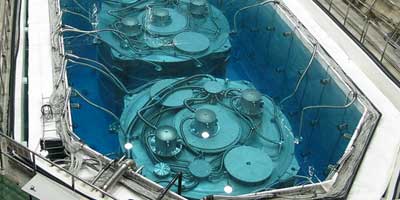
Best Precision Yet for Neutrino Measurements at Daya Bay
Brookhaven scientists join with members of the international Daya Bay Collaboration in announcing measurements that track the way neutrino particles change types, or flavors, as they move—an intriguing characteristic called neutrino oscillation.
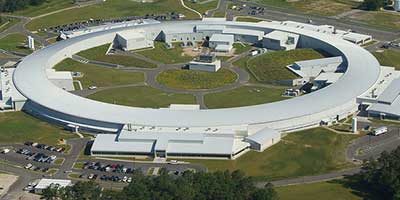
NSLS-II Opens for Science
The National Synchrotron Light Source II (NSLS-II), the brightest light source of its kind in the world, is dedicated. The facility produces extremely bright beams of x-ray, ultraviolet, and infrared light used to examine a wide range of materials, including superconductors and catalysts, geological samples, and biological proteins to accelerate advances in energy, environmental science, and medicine. Today 16 beamlines are available for research, 12 more are in development, and the facility has capabilities for an additional 30 .
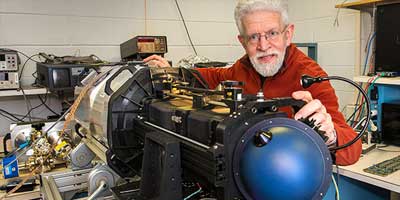
Large Synoptic Survey Telescope
The project team building a camera for the Large Synoptic Survey Telescope—staff at Brookhaven are developing its 3,200 megapixel camera sensor—earns "CD-3," a major milestone in the U.S. Department of Energy's critical decision (CD) process for managing large projects. In the hunt for evidence of dark energy, the LSST will capture light from stars 100 million times dimmer than the dimmest star visible to the naked eye, with a wide-angle view so the entire night sky can be surveyed far more quickly than what's possible with other advanced telescopes today.
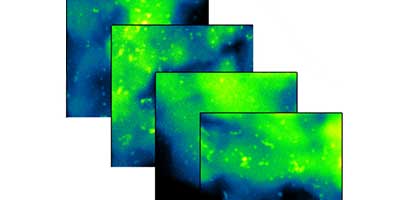
New Technique for 'Operando' Research
Brookhaven scientists develop a new technique that combines electron microscopy and synchrotron x-rays to track chemical reactions in operando—under real operating conditions—for research on catalysts, batteries, fuel cells, and other technologies.
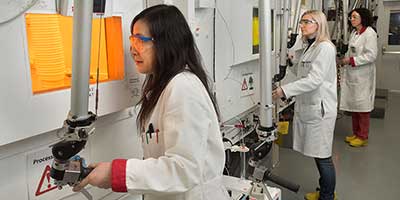
Upgrades at BLIP Facility to Produce Radiostopes for Diagnosing, Treating Diseases
Upgrades to the Brookhaven Linac Isotope Producer (BLIP), the Lab's radioisotope production and research facility, increase the yield of key medical isotopes produced for diagnosing and treating diseases.
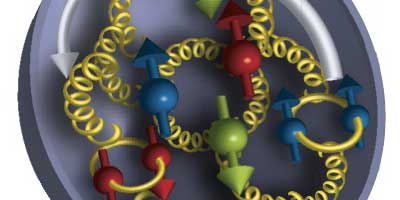
Physicists Zoom in on Gluons' Contribution to Proton Spin
Scientists' latest data from high-energy proton collisions at the Relativistic Heavy Ion Collider at Brookhaven indicate that "wimpy" gluons have a big impact on proton spin, and gluons overall may contribute more to the proton's spin than quarks. Still, large uncertainties remain—one of the reasons why nuclear physicists would like to build an electron-ion collider that would use an electron beam to probe the internal structure of the proton even more directly.

Brookhaven Selected to Host the Future Electron-Ion Collider
This Electron-Ion Collider (EIC) will be a discovery machine for unlocking the secrets of the "glue" that binds the building blocks of visible matter in the universe. It will be built through a partnership among the U.S. Department of Energy, Brookhaven Lab, and Jefferson Lab. New York State will provide strong support. The EIC is critical for the nation to maintain leadership in nuclear physics. It will also provide opportunities for new technology and workforce development for future scientists, engineers, technicians, and educators. Construction should begin in 2024 with operations starting in the early 2030s.
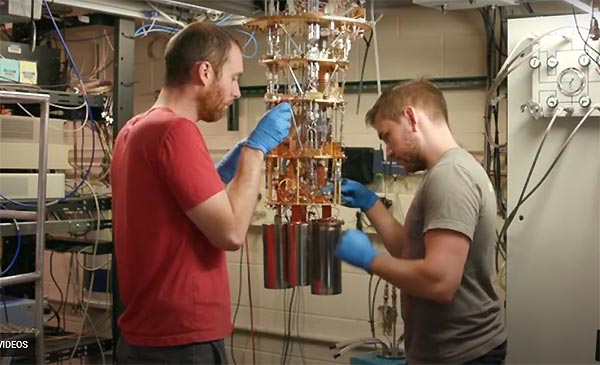
Brookhaven Begins Leading New Quantum Research Center
The U.S. Department of Energy selects Brookhaven Lab to lead one of five Quantum Information Science Research Centers established in support of the National Quantum Initiative. The Co-Design Center for Quantum Advantage (C2QA) team comprises several national labs, research centers, universities (including minority-serving institutions), and industry. IBM, MIT, Pacific Northwest National Laboratory, Princeton University, Yale University, and Stony Brook University are among the members building the tools needed for quantum-based advanced computing, communications, and fundamental science.




